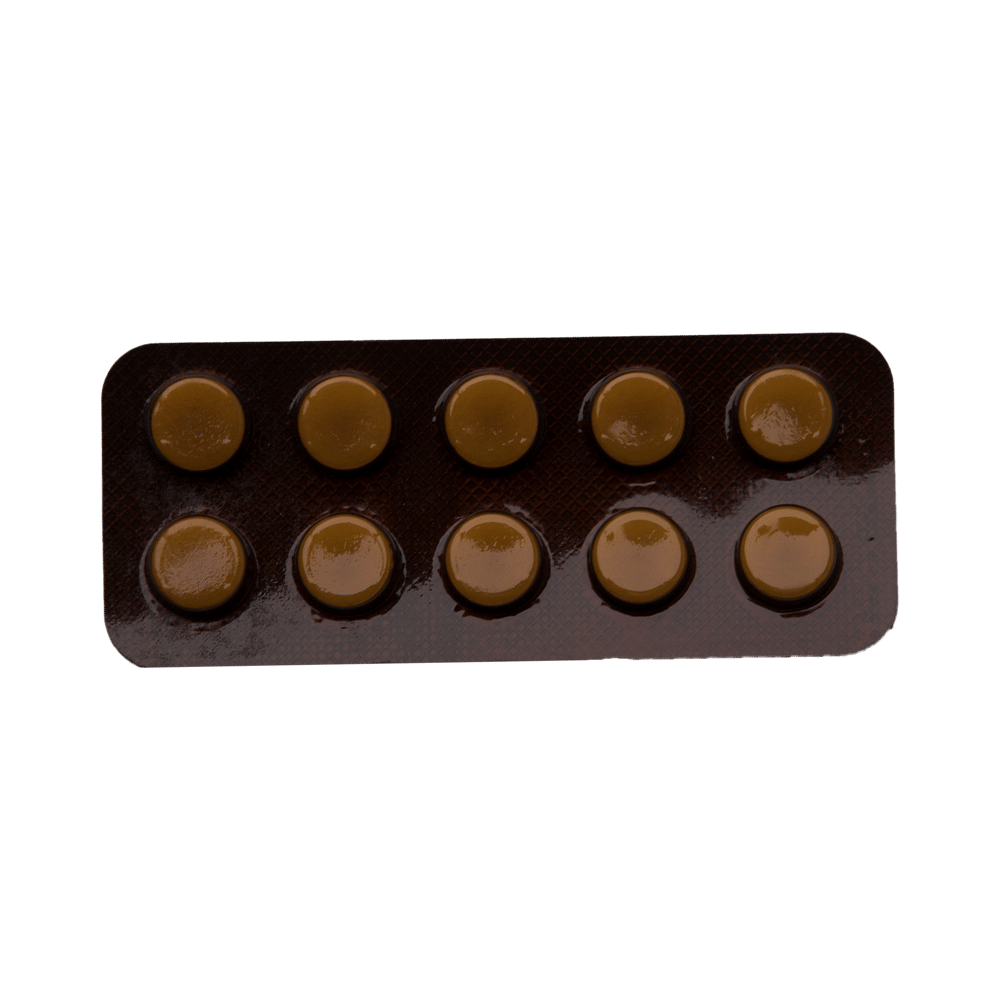
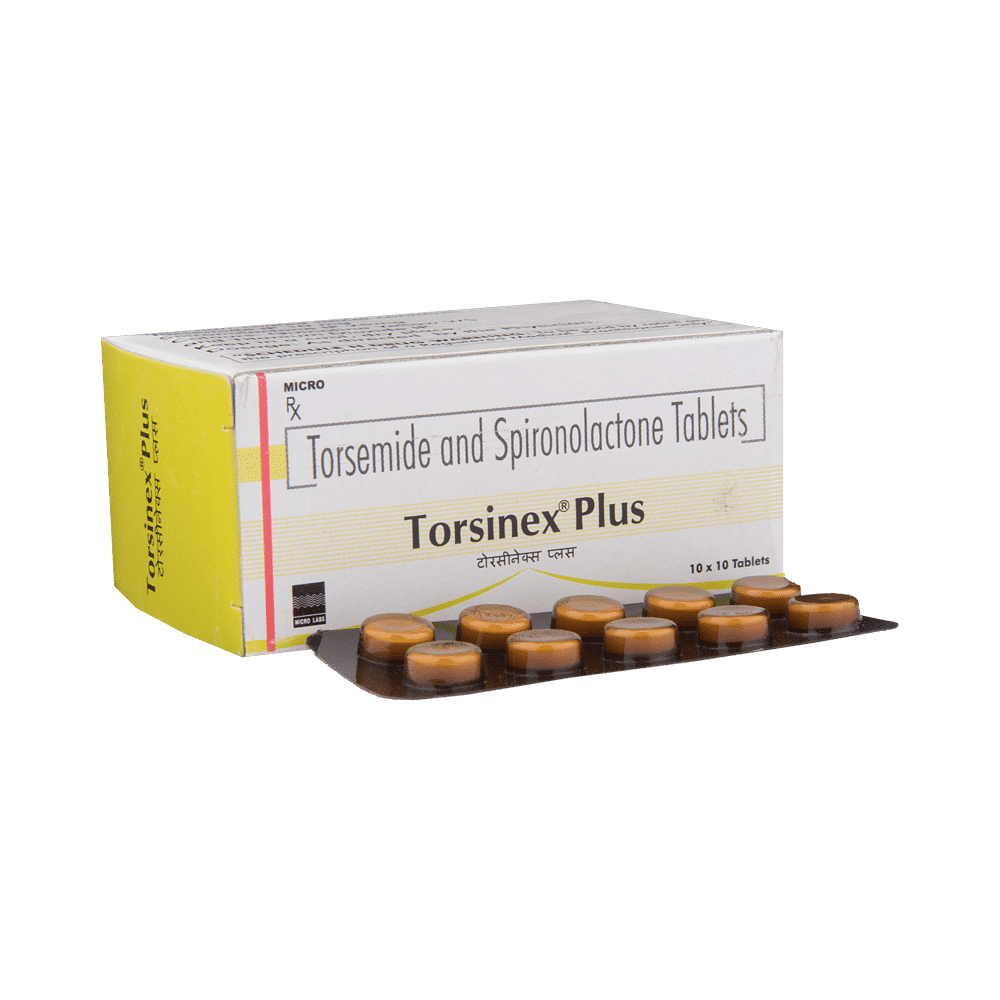
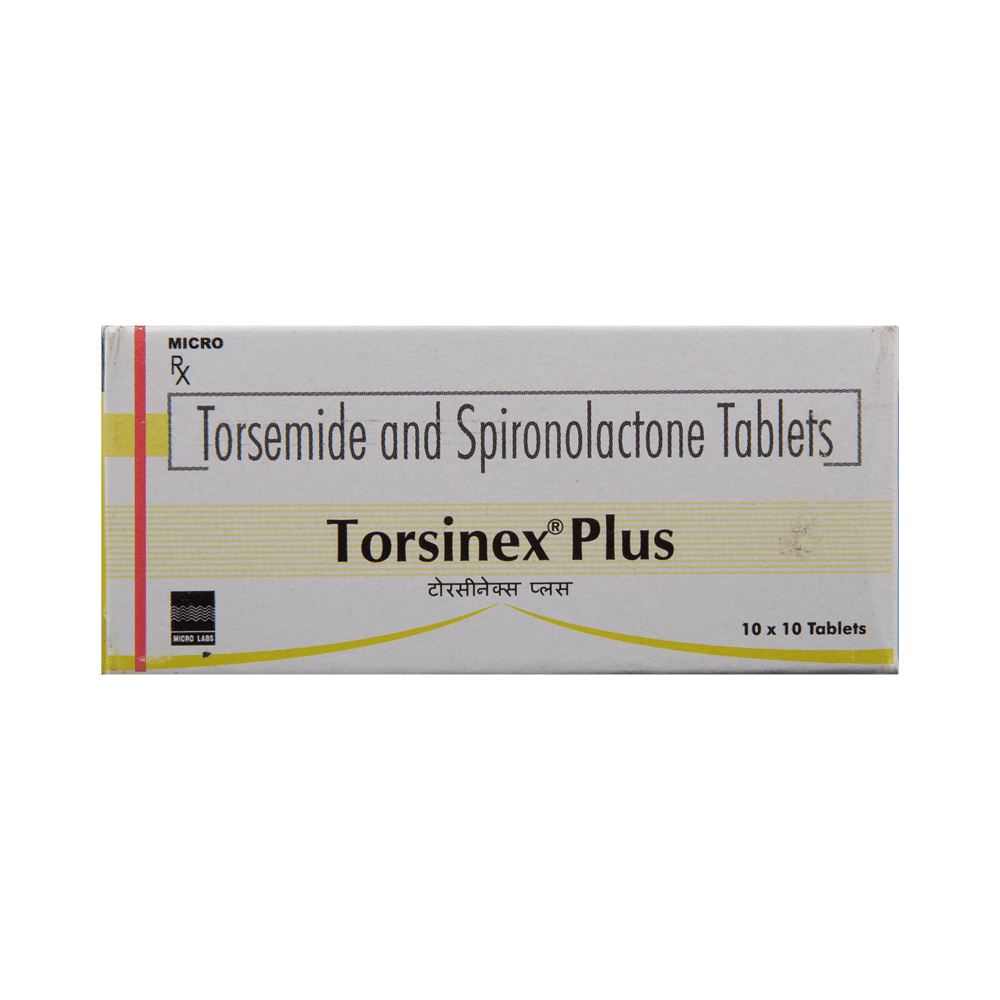



Torsinex Plus Tablet
Manufacturer
Micro Labs Ltd
Salt Composition
Torsemide (10mg) + Spironolactone (25mg)
Key Information
Short Description
Torsinex Plus Tablet is a combination of two medicines used to reduce excess fluid levels in the body while maintaining the potassium balance.
Dosage Form
Tablet
Introduction
Torsinex Plus Tablet is a combination of two medicines used to reduce excess fluid levels in the body while maintaining the potassium balance. It is used to treat edema (fluid overload) and some cases of hypertension.
Directions for Use
Take this medicine in the dose and duration as advised by your doctor. Swallow it as a whole. Do not chew, crush or break it. Torsinex Plus Tablet is to be taken with food.
Safety Information
Side Effects
No common side effects listed.
Alcohol Warning
It is unsafe to consume alcohol with Torsinex Plus Tablet.
Breastfeeding Warning
Torsinex Plus Tablet is probably safe to use during breastfeeding. Limited human data suggests that the drug does not represent any significant risk to the baby.
Pregnancy Warning
Torsinex Plus Tablet may be unsafe to use during pregnancy. Although there are limited studies in humans, animal studies have shown harmful effects on the developing baby. Your doctor will weigh the benefits and any potential risks before prescribing it to you. Please consult your doctor.
How it works
Torsinex Plus Tablet is a combination of two medicines: Spironolactone and Torasemide.
Quick Tips
Torsinex Plus Tablet helps removes excess water from your body. Take it in the morning with breakfast to avoid getting up at night to urinate. It may cause dizziness or sleepiness. Don't drive or do anything requiring concentration until you know how it affects you. To lower the chance of feeling dizzy or passing out, rise slowly if you have been sitting or lying down. It may cause excessive urine production, dehydration, and low electrolyte levels. Notify your doctor if you experience dizziness, tiredness, or muscle weakness that doesn't go away.
Related Medicines
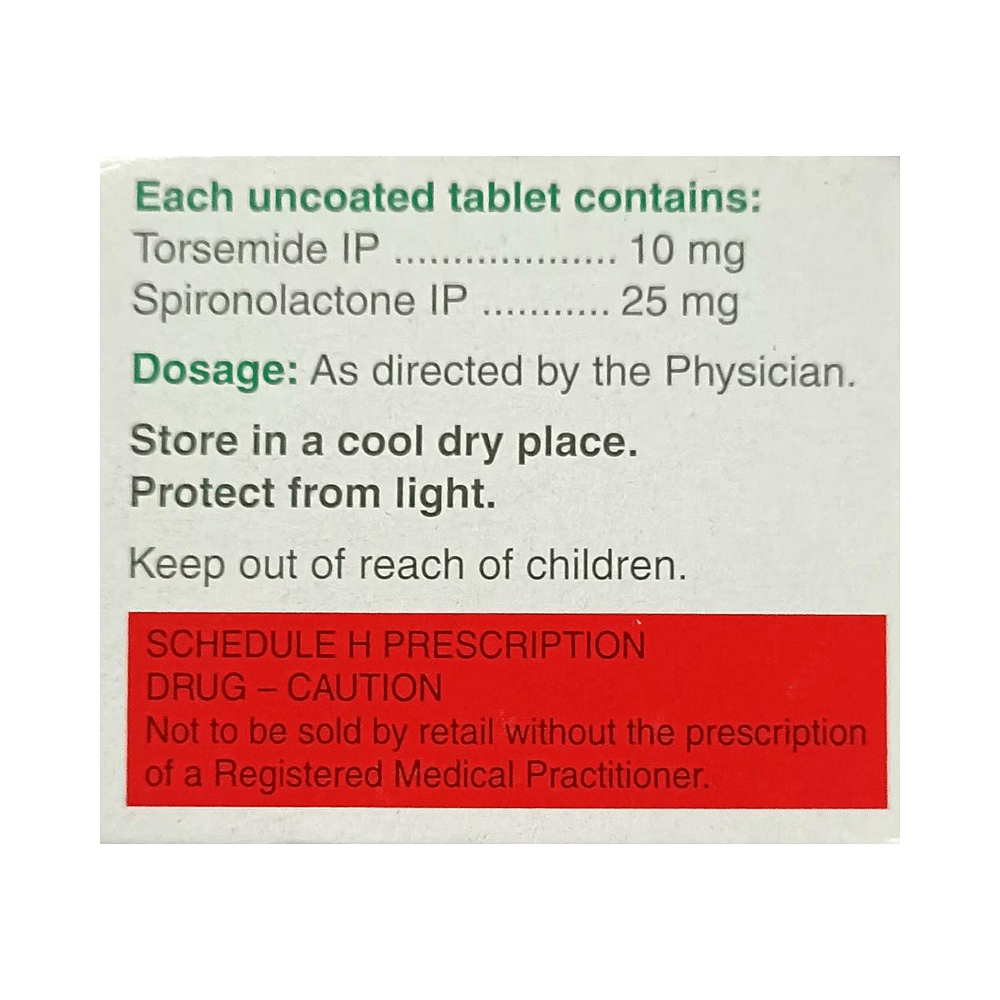
Dytor Plus LS 10 Tablet

Tide Plus 10 Tablet
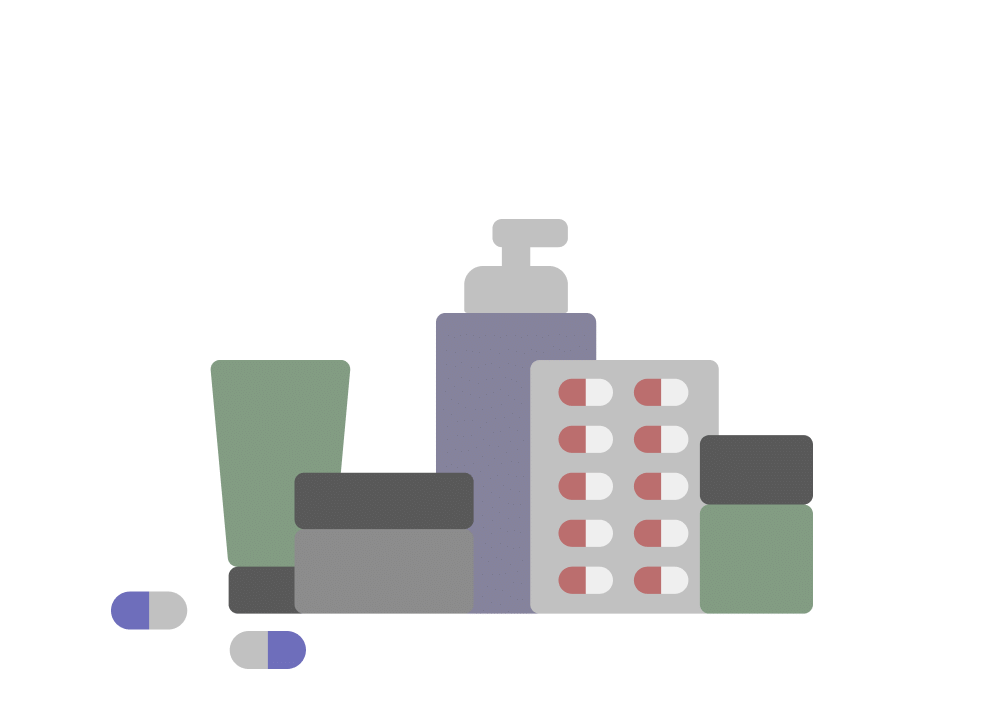
Litrakind Plus 25mg/10mg Tablet

Tornice Plus 25mg/10mg Tablet

Torlica Plus Ls 25mg/10mg Tablet

Dtmide Mini 25mg/10mg Tablet

Torspd S 25mg/10mg Tablet

Torsimax Plus 25mg/10mg Tablet

Semitor Plus 25mg/10mg Tablet

Jbtor Plus 25mg/10mg LS Tablet
Frequently asked questions
Can the use of Torsinex Plus Tablet cause dizziness or lightheadedness?
Yes, some patients may experience dizziness or lightheadedness when using Torsinex Plus Tablet. If you feel faint, weak, unsteady, or lightheaded, it is recommended to rest for a while and resume activity once you feel better. Avoid driving or operating machinery.
Can the use of Torsinex Plus Tablet increase the risk of gout?
Yes, Torsinex Plus Tablet can cause an increased blood uric acid level by reducing its excretion from the kidneys, which may trigger a gout attack. Inform your doctor if you have hyperuricemia or a history of gout before taking this medication.
Can the use of Torsinex Plus Tablet lead to dehydration?
Yes, some patients may experience excessive fluid loss and dehydration when using Torsinex Plus Tablet. Symptoms include dry mouth, thirst, drowsiness, restlessness, muscle pain, weakness, tiredness, low blood pressure, decreased urination, increased heart rate, nausea, and vomiting. If you experience persistent problems, inform your doctor.
Can the use of Torsinex Plus Tablet cause high potassium levels?
Yes, Torsinex Plus Tablet can lead to hyperkalemia, particularly in patients with underlying kidney disease or those consuming excessive potassium-rich foods. High potassium levels can be life-threatening and require regular electrolyte and kidney function tests.
What conditions should I avoid using Torsinex Plus Tablet for?
Avoid using Torsinex Plus Tablet if you have hypersensitivity to any of its ingredients, anuria, acute renal insufficiency, hepatic coma or pre-coma, low blood pressure, cardiac arrhythmias, are taking aminoglycosides or cephalosporins, have kidney dysfunction due to drug-induced damage, high potassium levels (hyperkalemia), Addison's disease, or moderate to severe renal impairment in children.
How should I store Torsinex Plus Tablet?
Keep the medication tightly closed in its original container and follow storage instructions on the pack or label. Dispose of unused medicine safely and ensure it is not accessible to pets, children, or other individuals.
What is Torsinex Plus Tablet?
Torsinex Plus Tablet is a fixed-dose combination of torasemide (a loop diuretic) and spironolactone (an aldosterone antagonist). Both components help remove excess fluid from the body. This combination is recommended for patients with congestive heart failure, nephrotic syndrome, liver cirrhosis with fluid retention, and swelling of the abdomen.
Is it safe to use Torsinex Plus Tablet?
Yes, Torsinex Plus Tablet is generally safe for most patients. However, common side effects may include dizziness, dehydration, decreased sodium levels in blood, breast enlargement in males, decreased magnesium and calcium levels in blood, and increased uric acid levels.


